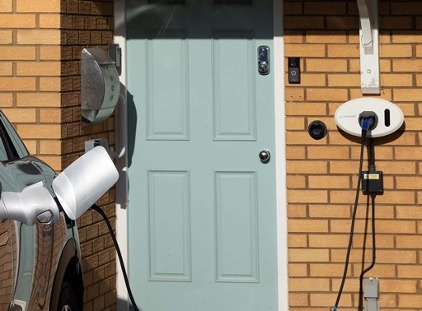
Architectural Practice
The Department for Levelling Up, Homes and Communities (DLUHC) announced a raft of changes in the law for Building Regulation Drawings that took effect from 15th June 2022.
While uplifts around ventilation come from Public Health England data on indoor air pollution, the bulk of the changes in the law for building regulation drawings in 2022 is part of the roadmap to the 2025 Future Homes Standard.
A key part of this Standard is that all new builds are zero carbon ready in support of the UK’s bid to deliver net-zero carbon emissions by 2050.
In addition, according to figures from the Department for Business, Energy & Industrial Strategy, heating and powering buildings currently account for 40% of the UK’s total energy usage. So, by implementing new building regulations that help reduce the need for heat and power in buildings, the UK can make great strides towards its carbon zero ambitions.

The new building regs comprise uplifts to Approved Document L, Conservation of fuel and power and Approved Document F, and the creation of Approved Document O, Overheating and Approved Document S, Infrastructure for charging electric vehicles.
These are the key changes to be aware of:
From 15th June 2022, newly built homes will need to produce at least 31% fewer carbon emissions. The government sees the installation of electric central heating systems as an enabler of this, particularly when combined with a renewable energy source such as solar. Heat pumps are also getting strong support as part of the Future Homes Standard.
New non-domestic builds will need to produce at least 27% fewer carbon emissions. Again, the installation of low-carbon heating technology is seen as the best route to achieve this.
‘Primary energy’ will be used to measure the efficiency of a building’s heating, as well as the energy used to deliver fuel to the building, and even the efficiency of the power station supplying the electricity.

In new domestic builds, the new U-value for walls will be 0.18W/m², 1.4 (Window Energy Rating Band B) for windows and roof lights, and 1.4. for doors. As for non-domestic builds, there’s a lowered U-value of 0.26W/m² K for walls and the majority of new windows and curtain walls must achieve 1.6.
New and replacement heating systems in both domestic and non-domestic builds must have a max flow temperature of 55°C.
Existing non-domestic buildings must improve the efficiency of heating and hot water boiler systems through the installation of new controls. In new non-domestic buildings, the minimum lighting efficiency will be raised to 80 luminaire lumens per circuit watt for display lighting and 95 luminaire lumens for general lighting.
Background trickle ventilators will be recommended in non-domestic buildings, along with the requirement for the installation of CO2 monitors in offices. Moreover, the new guidance will also stipulate a recommended minimum air supply rate of 0.5 l/s.m².
The FEES level in new homes will be set by a ‘full fabric specification’ and SAP compliance will now be applied to extensions built on existing properties.
The new Approved Document: Approved Document O introduces glazing limits in new build homes, care homes, schools and student accommodation to reduce unwanted solar heat. It also stipulates new levels of cross-ventilation required to remove excess heat.
The new Approved Document S requires all domestic new builds to have the preparatory work completed for the future installation of an electric vehicle charge point, thus affecting building regulation drawings.

We spoke to happinest – we design happinests! Chief of Design, Adam Brown with over two decades of industry experience and over 3000 completed projects.
Adam said: “It’s more critical than ever to only work with experienced and knowledgeable architectural Design Practices who understand fully and design plans that meet current building regulations and observe future regulations. This means our builds are always compliant. We stay in constant communication with the customer and LABC ( Local Authority Building Control ) throughout the build to review all plans and share any amendments. However, it is the customer’s choice to incorporate future requirements into a current build as we are only required to build in line with the current regulations.”
Adam further explained how the new building regulations will impact happinest customers, particularly on new builds and renovations: “They will need to cover the costs of many of the required changes that impact insulation efficiency etc. This could be as simple as investing in triple glazing or reducing the size of their bi-fold doors. Typically, customers will have to make informed decisions to achieve compliance with these new regulations, and they will need to include this in their initial budgeting.”
While the amended regulations and accompanying approved documents came into force on 15 June 2022, the government has stipulated transitional arrangements to support businesses and homeowners with compliance.
As a result, Adam Brown has this to say: “The changes will not apply in relation to building work where a building notice or an initial notice has been given to, or full plans deposited with, a local authority before 15 June 2022 provided that the building work is started before 15 June 2023. In some cases, applications will be in respect of a number of buildings on a site, for example, a number of houses. In such cases, it is only those individual buildings for which work is commenced which can take advantage of the transitional provisions.”
The 2-year building regs rule allows for a person that has carried out work that contravenes building regs to be prosecuted up to two years after the completion of the work.
A local authority can enforce building regs at any time after a building’s construction, there is no enforcement time limit.
Building regulation compliance will always be required in a building, be it domestic or non-domestic, a new build or an extension. Furthermore, a local Council is well within its rights to enforce building regs and the amendment of building regulation drawings and prosecute the appropriate person for breaking them at any time after the project has finished.
Some do. In existing buildings, regulations will typically apply to new build extensions or the installation of new materials or technology.
If you require building regulation drawings Derby for your extension, get in touch with our friendly team today by calling 0800 021 0232 or emailing info@happi-nest.co.uk for an instant quote.
Book a FREE home visit at a time and date that works for you to discuss your project.